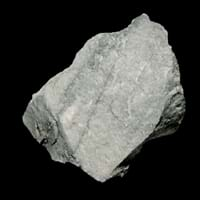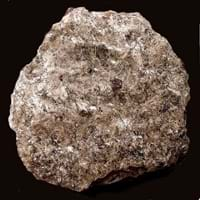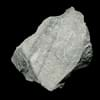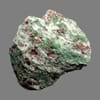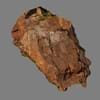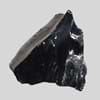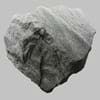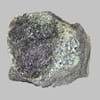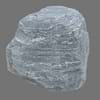Definition
Quartzite is a non-foliated metamorphic rock that forms by the metamorphism of pure quartz Sandstone
Schist is a medium grade metamorphic rock with medium to large, flat, sheet like grains in a preferred orientation
Discoverer
Unknown
Unknown
Etymology
From quartz + -ite
From French schiste, Greek skhistos i.e. split
Class
Metamorphic Rocks
Metamorphic Rocks
Sub-Class
Durable Rock, Hard Rock
Durable Rock, Medium Hardness Rock
Group
Not Applicable
Not Applicable
Other Categories
Medium Grained Rock, Opaque Rock
Coarse Grained Rock, Fine Grained Rock, Medium Grained Rock, Opaque Rock
Texture
Foliated, Granular
Foliated, Platy
Color
Black, Blue, Brown, Green, Light Grey, Purple, White, Yellow
Black, Blue, Brown, Dark Brown, Green, Grey, Silver
Durability
Durable
Durable
Appearance
Lustrous
Layered and Shiny
Interior Uses
Countertops, Decorative Aggregates, Flooring, Homes
Decorative Aggregates, Floor Tiles, Interior Decoration
Exterior Uses
As Building Stone, As Facing Stone, Garden Decoration, Paving Stone
Garden Decoration, Paving Stone
Other Architectural Uses
Curbing
Not Yet Used
Construction Industry
Arrowheads, As Dimension Stone, Cement Manufacture, Construction Aggregate, Cutting Tool, for Road Aggregate, Making natural cement, Production of Glass and Ceramics, Rail Track Ballast, Roadstone
As Dimension Stone, Building houses or walls, Cement Manufacture, for Road Aggregate, Roadstone
Medical Industry
Not Yet Used
Not Yet Used
Antiquity Uses
Artifacts, Jewellery, Monuments, Sculpture
Artifacts
Commercial Uses
An Oil and Gas Reservoir, As armour rock for sea walls, Cemetery Markers, Commemorative Tablets, In aquifers, Laboratory bench tops, Petroleum reservoirs, Soil Conditioner, Source of Magnesia (MgO), Tombstones, Used in aquariums
Used in aquariums, Writing Slates
Types
Not Available
Mica Schists, Calc-Silicate Schists, Graphite Schists, Blueschists, Whiteschists, Greenschists, Hornblende Schist, Talc Schist, Chlorite Schist, Garnet Schist, Glaucophane schist.
Features
Generally rough to touch, Is one of the oldest rock
Easily splits into thin plates, Smooth to touch
Archaeological Significance
Monuments
Used
Not Yet Used
Famous Monuments
Data Not Available
Not Applicable
Sculpture
Used
Not Yet Used
Famous Sculptures
Data Not Available
Not Applicable
Pictographs
Not Used
Used
Petroglyphs
Not Used
Used
Figurines
Used
Not Yet Used
Formation
Quartzite forms from sandstone and the mineral quartz being put under extreme heat and pressure.
Schist formed by dynamic metamorphism at high temperatures and pressures that aligns the grains of mica, hornblende and other elongated minerals into thin layers.
Mineral Content
Chlorite, Epidote, Hematite, Kyanite, Magnetite, Muscovite or Illite, Quartz
Alusite, Amphibole, Biotite, Chlorite, Epidote, Feldspar, Garnet, Graphite, Hornblade, Kyanite, Micas, Muscovite or Illite, Porphyroblasts, Quartz, Sillimanite, Staurolite, Talc
Compound Content
Aluminium Oxide, CaO, Iron(III) Oxide, MgO, Sodium Oxide, Silicon Dioxide
CaO, Carbon Dioxide, MgO
Types of Metamorphism
Burial Metamorphism, Cataclastic Metamorphism, Hydrothermal Metamorphism, Regional Metamorphism
Not Applicable
Types of Weathering
Biological Weathering, Chemical Weathering, Mechanical Weathering
Biological Weathering, Chemical Weathering, Mechanical Weathering
Types of Erosion
Chemical Erosion, Coastal Erosion, Water Erosion, Wind Erosion
Chemical Erosion, Coastal Erosion, Glacier Erosion
Grain Size
Medium Grained
Medium to Fine Coarse Grained
Fracture
Uneven, Splintery or Conchoidal
Conchoidal
Porosity
Less Porous
Highly Porous
Compressive Strength
Not Available
Cleavage
Indiscernible
Slaty
Specific Gravity
2.6-2.8
2.5-2.9
Transparency
Transparent to Translucent
Opaque
Density
2.32-2.42 g/cm3
2.8-2.9 g/cm3
Specific Heat Capacity
Not Available
Resistance
Heat Resistant, Impact Resistant, Pressure Resistant, Wear Resistant
Impact Resistant, Pressure Resistant, Water Resistant
Deposits in Eastern Continents
Asia
China, India, Israel, Russia, South Korea, Thailand, Turkey
Afghanistan, Bangladesh, Bhutan, China, India, Japan, Kazakhstan, Malaysia, Pakistan, Russia, Thailand, Turkey, Vietnam
Africa
Ethiopia, Morocco, South Africa, Zimbabwe
Egypt, Ethiopia, Morocco, Nigeria, South Africa
Europe
England, Italy, Norway, Scotland, Sweden, United Kingdom
Austria, England, France, Georgia, Germany, Italy, Liechtenstein, Monaco, Norway, Slovenia, Spain, Sweden, Switzerland
Others
Greenland
Not Yet Found
Deposits in Western Continents
North America
Bahamas, Canada, USA
Canada, Costa Rica, Cuba, Mexico, Panama, USA
South America
Brazil, Colombia, Venezuela
Brazil, Colombia, Guyana
Deposits in Oceania Continent
Australia
New Zealand, Queensland, Western Australia
New South Wales, New Zealand, Queensland
All about Quartzite and Schist Properties
Know all about Quartzite and Schist properties here. All properties of rocks are important as they define the type of rock and its application. Quartzite and Schist belong to Metamorphic Rocks.Texture of Quartzite is Foliated, Granular whereas that of Schist is Foliated, Platy. Quartzite appears Lustrous and Schist appears Layered and Shiny. The luster of Quartzite is vitreous while that of Schist is shiny. Quartzite is available in black, blue, brown, green, light grey, purple, white, yellow colors whereas Schist is available in black, blue, brown, dark brown, green, grey, silver colors. The commercial uses of Quartzite are an oil and gas reservoir, as armour rock for sea walls, cemetery markers, commemorative tablets, in aquifers, laboratory bench tops, petroleum reservoirs, soil conditioner, source of magnesia (mgo), tombstones, used in aquariums and that of Schist are used in aquariums, writing slates.
